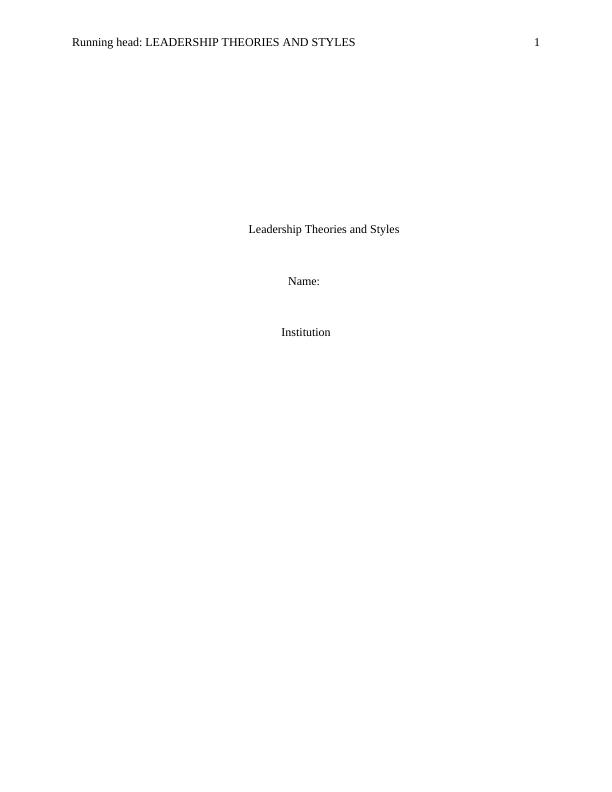Leadership Theories and Styles
Added on 2023-06-03
6 Pages1138 Words69 Views
End of preview
Want to access all the pages? Upload your documents or become a member.
Leadership Styles: Trait Theory, Situational, Transformational, and Servant Leadership
|12
|2241
|371
Servant Leadership and its Impacts Assignment
|4
|628
|36
Servant Leadership in Starbucks: Critical Evaluation of KJ's Leadership
|13
|3944
|72
Leadership Report
|9
|2604
|91
Three Pillars of Authentic Leadership
|7
|1391
|54
Organizational Leadership: Reflective Essay on Leadership Philosophy and Application
|9
|2713
|72



